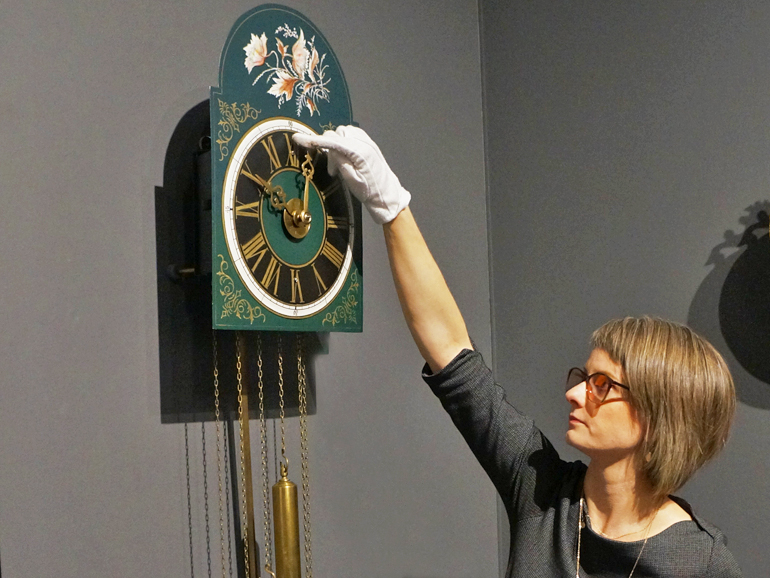The importance of timepieces, particularly clocks, is the focus of an exhibit currently on display in the main gallery at Mennonite Heritage Village in Steinbach. It's called, ‘The Art of Mennonite Clocks’ and is produced by a partnership of Mennonite Heritage Village and the Kroeger Clock Heritage Foundation. Museum curator Andrea Dyck says the exhibit explores what clocks and time meant to Mennonites and how they captured time.
"It's an object that was made by Mennonites for Mennonites. The art of Mennonite clock-making started in the 1700's in Prussia and it flourished in Russia as they became settled in their colonies and villages in Russia. But that also overlaps with the Industrial Revolution. So if you think about farming and agricultural life versus life going to work in a factory for example, if you need to get to work at a certain time, you need a clock for that. So at that point in history, clocks became more of an essential item in the home."
Dyck says even though Mennonites tended to be more agricultural people at that time, they did have these clocks and time became a focus in their households.

Dyck says Mennonite clocks are unique to the people who built them and for the images they displayed.
"The mechanism is similar from clockmaker-to-clockmaker but when you take the face off of the clock, you can see that lots of the clockmakers left a mark on there. Often, when people donate a clock to us they say: I have no idea about this clock, when it was made, who made it. Once you take the face off, there are certain telltale marks on the gears. We have a few clocks with faces off where you can see, ah, okay, there's a serial number. The Kroegers stamped every piece of the clock with a specific serial number. Other clockmakers actually etched their initials into the gears. So, often, the mechanisms inside can tell you a lot about the story as well."
Dyck says Mennonites were not the originators of clock-making but certainly made a mark on how they are designed and built.
The exhibit will run at MHV until next April.
Speaking of clocks, we revert back to Central Standard Time Saturday night. Before heading to bed, set your clocks back one hour.

















